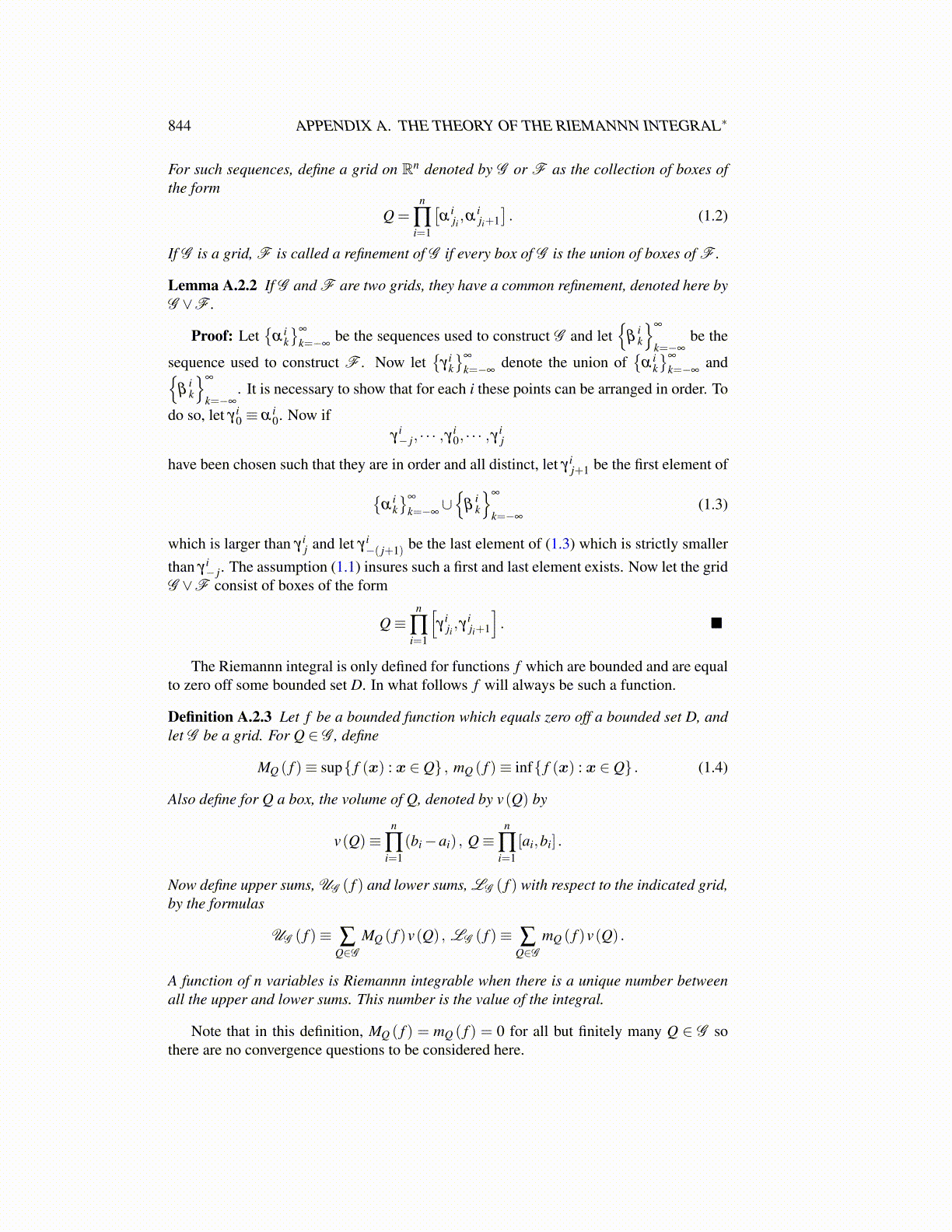
844 APPENDIX A. THE THEORY OF THE RIEMANNN INTEGRAL∗
For such sequences, define a grid on Rn denoted by G or F as the collection of boxes ofthe form
Q =n
∏i=1
[α
iji ,α
iji+1]. (1.2)
If G is a grid, F is called a refinement of G if every box of G is the union of boxes of F .
Lemma A.2.2 If G and F are two grids, they have a common refinement, denoted here byG ∨F .
Proof: Let{
α ik
}∞
k=−∞be the sequences used to construct G and let
{β
ik
}∞
k=−∞
be the
sequence used to construct F . Now let{
γ ik
}∞
k=−∞denote the union of
{α i
k
}∞
k=−∞and{
βik
}∞
k=−∞
. It is necessary to show that for each i these points can be arranged in order. To
do so, let γ i0 ≡ α i
0. Now ifγ
i− j, · · · ,γ i
0, · · · ,γ ij
have been chosen such that they are in order and all distinct, let γ ij+1 be the first element of{
αik}∞
k=−∞∪{
βik
}∞
k=−∞
(1.3)
which is larger than γ ij and let γ i
−( j+1) be the last element of (1.3) which is strictly smallerthan γ i
− j. The assumption (1.1) insures such a first and last element exists. Now let the gridG ∨F consist of boxes of the form
Q≡n
∏i=1
[γ
iji ,γ
iji+1
]. ■
The Riemannn integral is only defined for functions f which are bounded and are equalto zero off some bounded set D. In what follows f will always be such a function.
Definition A.2.3 Let f be a bounded function which equals zero off a bounded set D, andlet G be a grid. For Q ∈ G , define
MQ ( f )≡ sup{ f (x) : x ∈ Q} , mQ ( f )≡ inf{ f (x) : x ∈ Q} . (1.4)
Also define for Q a box, the volume of Q, denoted by v(Q) by
v(Q)≡n
∏i=1
(bi−ai) , Q≡n
∏i=1
[ai,bi] .
Now define upper sums, UG ( f ) and lower sums, LG ( f ) with respect to the indicated grid,by the formulas
UG ( f )≡ ∑Q∈G
MQ ( f )v(Q) , LG ( f )≡ ∑Q∈G
mQ ( f )v(Q) .
A function of n variables is Riemannn integrable when there is a unique number betweenall the upper and lower sums. This number is the value of the integral.
Note that in this definition, MQ ( f ) = mQ ( f ) = 0 for all but finitely many Q ∈ G sothere are no convergence questions to be considered here.